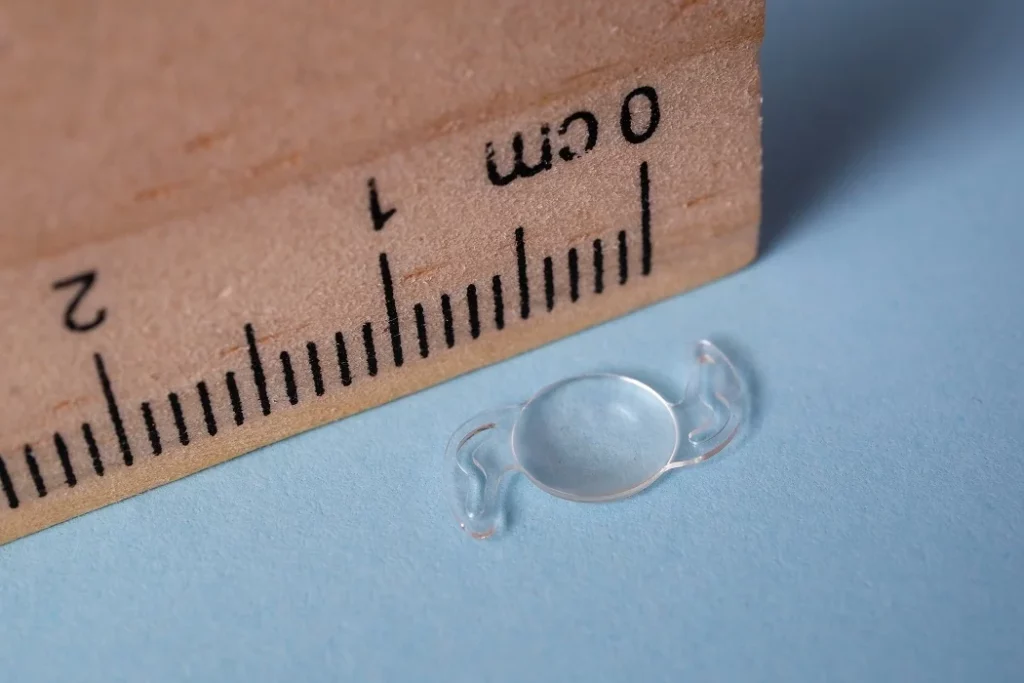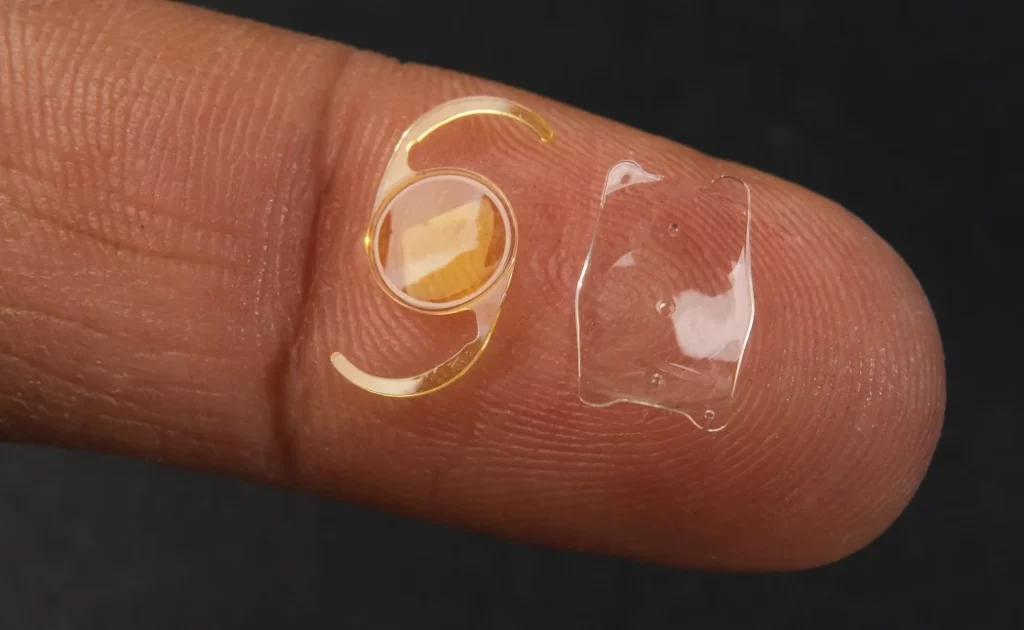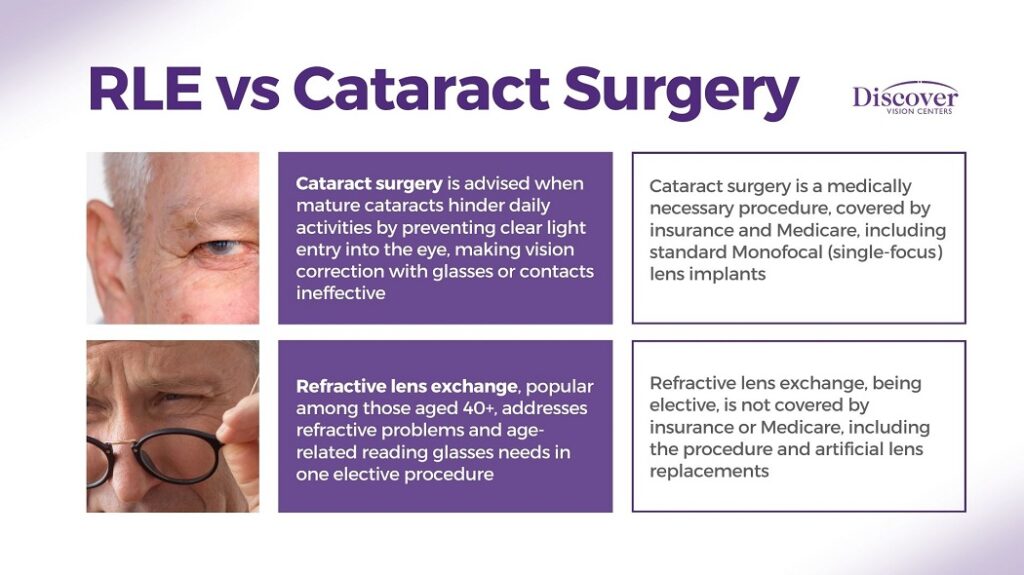
Updated: February 27, 2024

Refractive lens exchange (RLE) and cataract surgery both involve removing the eye’s natural lens, but their purposes differ. RLE is primarily performed to correct refractive errors like nearsightedness or farsightedness, often in patients without significant cataracts. In contrast, cataract surgery is specifically for removing a cloudy lens affected by cataracts, aiming to restore clear vision. Both procedures incorporate intraocular lenses (IOLs) to enhance vision, with RLE focusing on vision correction, while cataract surgery can address impaired vision due to cataracts and vision correction simultaneously using light adjustable implants. It should be noted that there are many names for the same procedure with regard to refractive lens exchange. Other names for the same procedure – Refractive Lens Exchange are Refractive Lens Replacement, Clear Lens Exchange, Clear Lens Replacement, Custom Lens Replacement. All of these terms describe the exact same procedure.
Candidates for refractive lens exchange (RLE) are typically individuals seeking a permanent solution for vision correction, particularly those with age-related presbyopia, severe farsightedness (hyperopia), or nearsightedness (myopia). RLE is often considered when other refractive procedures, like LASIK or PRK, may not be suitable. Ideal candidates are generally over 40 years old, experiencing presbyopia, and may also have cataracts or early lens changes. Additionally, individuals with stable eye prescriptions, good overall eye health, and realistic expectations about the procedure’s outcomes are potential candidates. A thorough evaluation by an eye care professional is essential to determine eligibility and discuss the potential benefits and risks associated with refractive lens exchange.
Insurance coverage for refractive lens exchange (RLE) varies, but in many cases, it is not covered as it is often considered an elective refractive surgery for vision correction rather than a medically necessary procedure. RLE involves removing the eye’s natural lens and replacing it with an artificial intraocular lens (IOL) to improve vision. Patients typically bear the full cost, encompassing pre-operative assessments, surgery, and post-operative care. It’s essential to consult with your specific insurance provider to understand their policies and inquire about any potential coverage or reimbursement options for refractive lens exchange or other refractive surgeries.

Cataract patients with a cloudy lens affecting daily activities are candidates for cataract surgery. Individuals experiencing symptoms like blurred vision, difficulty seeing in low light, or glare sensitivity may benefit. Candidates should have stable overall eye health and realistic expectations. The decision for surgery is often based on the impact of cataracts on daily life. During cataract surgery, the cloudy natural lens is removed and replaced with a clear artificial intraocular lens (IOL), aiming to restore clear vision. An assessment by an eye care professional determines candidacy and the appropriate timing for the surgical procedure.
In most cases, health insurance covers the cost of cataract surgery, considering it as a medically necessary procedure. Insurance typically covers basic surgical and diagnostic expenses, including the intraocular lens (IOL) implant. However, patients may incur additional costs for upgraded lens options or advanced technologies. It’s crucial to verify coverage details with the insurance provider, understanding any co-pays, deductibles, or out-of-pocket expenses. Some elective components of cataract surgery, like premium lens options for astigmatism correction or presbyopia, may not be fully covered. Patients should consult their insurance plan and eye care provider to determine the extent of coverage.
Cataract surgery and refractive lens exchange (RLE) share similarities as both involve lens replacement surgery. In both procedures, the eye’s natural lens is removed and replaced with an artificial intraocular lens (IOL). While cataract surgery primarily addresses cloudy lenses caused by cataracts, RLE is a refractive procedure aimed at correcting vision, often for individuals with presbyopia or significant refractive errors, using the same fundamental surgical technique.
Cataract surgery is a medically necessary elective surgical procedure to remove cloudy lenses affected by cataracts, while refractive lens exchange (RLE) is an elective surgical procedure for vision correction, addressing refractive errors and presbyopia. Both surgeries involve replacing the eye’s natural lens with an artificial intraocular lens (IOL), though the primary focus and intent may differ — therapeutic for cataract surgery and refractive for RLE, both can achieve vision correction and freedom from glasses and contact lenses when using the light adjustable lens implant.

In modern cataract surgery and refractive lens exchange (RLE), various synthetic intraocular lenses (IOLs) are available to cater to different vision needs. These advanced lenses aim to enhance visual outcomes and reduce dependence on glasses. Here are some types of synthetic lenses commonly used:
Specifically, the Light Adjustable Lens (LAL) is a newer implant option that falls into the EDOF category, but also has very precise and customizable outcomes because the power of the lens can be altered to a desired power after the lens is implanted.
It’s important for patients to discuss their lifestyle, visual preferences, and any specific refractive errors with their eye care professional to determine the most suitable synthetic lens option for their cataract surgery or refractive lens exchange procedure.
Whether you have cataracts or have been told that you are not a candidate for laser vision correction, know that there are great surgical options to correct your vision. Replacing the eye’s natural lens can be a path to freedom from glasses and contact lenses. Set up an appointment at one of the many Discover Vision locations in the Kansas City metro area to discuss your best option with our doctors.